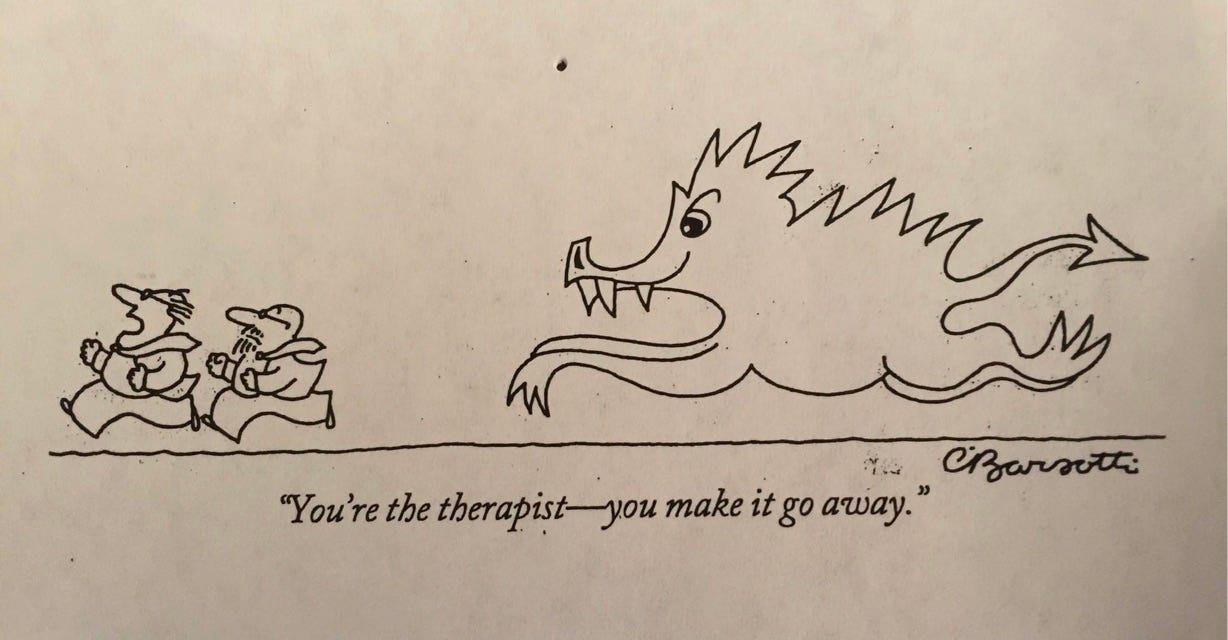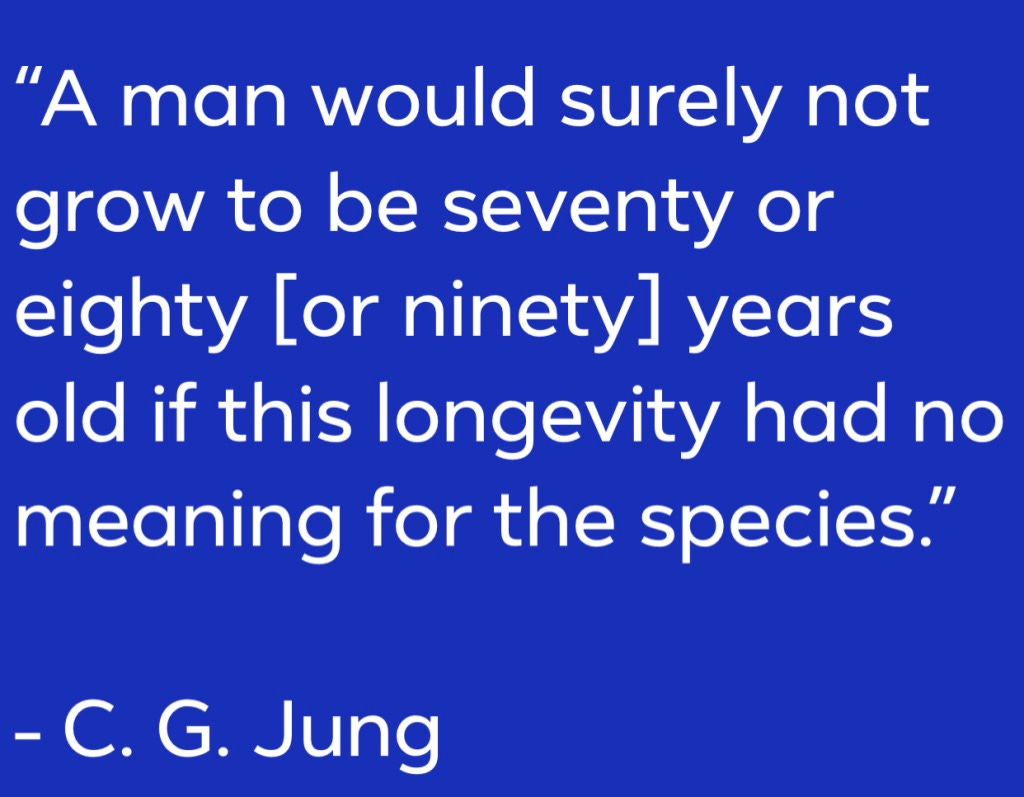Holiday-weekend greetings, and happy Sunday from newShrink!

As we near the close of 2021 this week’s newShrink Postcards highlight a few of the pictures, quotes and segments from our weekly tracking of soul in the news and news figures of the day. These are in topical browsing, not chronological, order with slight emphasis on pieces from earlier in the year rather than very recent.
Note: To link full posts on the website for each of these samples you can click the couch in the newShrink logo above, then find each entry by title and date in the Archives. And as always, anyone can also go directly to the public website at newshrink.substack.com from a browser.
🔵
“Dearest Friend, Summer of Soul... + Moves and Tweaks” (News Notebook 7.2.21).
This July 4 weekend piece on Abigail (and John) Adams continues to be a favorite newShrink item for me, and it struck a chord with a lot of you.
Among the amazing cast of characters involved in our nation’s founding, I have long savored the early patriots, second U.S. President John and First Lady Abigail Adams. From a soul-of-the-nation standpoint it’s hard to match their biographical life-stories, relationship, prolific correspondence and interface with history (and with other historic figures such as Adams’ fellow patriot, then political foe, third President Thomas Jefferson.)
dearest friend
Today I’m revisiting this widely familiar quote in a March 31, 1776, letter to John from Abigail, writing from their home managing family and farm in Braintree, MA, a few months before the Declaration of Independence. John was in Paris for one of their five-years-plus transatlantic separations, as John and others negotiated funding and support for the unfolding Revolution. (In this unusual close-partnership of the 54-year Adams marriage, the achingly slow back-and-forth of their letters during these years was their sole day-to-day life together; even their arguments and misunderstandings were with months-long mail delays and ocean in between! The utterly mundane details in this one make the link to the full letter, as well as to collected volumes of them, worth a read.)
As with Abigail’s familiar, delicately quaint-sounding quote about “remembering the ladies” in crafting the Declaration and new government, I had long appreciated that by all accounts, in person as in letters, the couple’s favorite affectionate address for one another was “dearest friend.” One lovely biography of Abigail has that title.
But until I read the whole letter for the first time in decades, I had not recalled how fiercely Abigail makes the case for equality between men and women as a fundamental part of the equality at the heart of the Revolution. As a model for this dramatic shift in approach, she even holds up her and John’s own term of endearment and connection, Friend. (Somehow this strikes me with a lot more heft than that simper-sounding “remember the ladies.”)
And in any case, I guess we must assume those transatlantic mails were extra-slow that time, for none of it got into the Declaration (or a whole lot else later, either.)
Here’s the excerpt, and the full link:
“I long to hear that you have declared an independancy [sic]—and by the way in the new Code of Laws which I suppose it will be necessary for you to make I desire you would Remember the Ladies, and be more generous and favourable to them than your ancestors… Do not put such unlimited power into the hands of the Husbands. Remember all Men would be tyrants if they could…but such of you as wish to be happy willingly give up the harsh title of Master for the more tender and endearing one of Friend.“
🔵
“Afghan Echoes, Vietnam Voices .... and Rolling Stones” (News Notebook 8.20.21)

🔵
“Memorials, Commencements... and Prince” (News Notebook 6.4.21)

🔵
I cite the the following four editions in full as favorites of mine for their meatier fare on important topics and deeper dives into single-topics as Shrink-wrap pieces:
“Dear Mr. Governor... Fire, Lightning Bolts... and Magnolias,” (News Notebook Friday 8.13.21)
Several of my thoughts and reflections from a depth-psychology and soul perspective on sexuality and power-dynamics in the #MeToo-era aftermath of former New York Governor Andrew Cuomo’s resignation due to multiple claims of a pattern of workplace sexual harassment.
“Darkness Visible, Owl Season… and Little Boys With Big Guns,” (News Notebook Friday 11.12.21)
This one looks at clinical, seasonal and depth/soul-psychological dimensions of the large and growing public-health crisis of depression alongside the gun-violence issues raised by several high-profile murder cases.
“Those Vocal Historic Political Wives Again: Revisiting A Civil War Tour de Force” (Shrink-wrap Friday 9.24.21)
Spurred by a reference by political-historian Heather Cox Richardson, this revisiting and recommendation of Mary Boykin Chesnut’s Pulitzer-winning Civil War diary edited by C. Vann Woodward draws relevant connections with many current news issues and newShrink’s focus on psychological and soul dimensions. Such as:
🔷 Race- and white-supremacy-related events and controversies around Confederate statues, Daughters of the Confederacy and the Jim Crow era “Lost Cause;” teaching of so-called Critical Race Theory and the 1619 Project; Black Lives Matter and police shootings; voter suppression and voting rights.
🔷 The parallels between her literally, violently, geographically and economically divided country over the four years of the Civil War and Confederacy and today’s less visible, but complex, divisions around politics and virtually every aspect of American life.
🔷 My continuing focus and commentary here on gender relations, intersections of sexuality and power both public and private, and #MeToo.
🔷 Separate but related, to me Chesnut is an especially useful reference point for looking at how women have for millennia survived, economically and in terms of power, in patriarchy. That survival includes internalizing it, colluding and aligning with power in whatever ways available — including women-vs-women. As reminder of this sobering dynamic I consider that a majority of all American white women in 2016 voted for Donald Trump over the first and enormously qualified woman candidate Hillary Clinton.
🔷Another way that Chesnut is a useful reference point on gender is as reminder of another sobering fact —antebellum and reconstruction US and Confederacy alike: That women were property and therefore could neither own nor inherit property. And the financial realities have changed slowly, with setbacks and not completely, today.
🔷 And finally, examining what we know of Chesnut — and her relationship with James — can offer useful insight and example from the psychological and soul/unconscious perspectives.
🔵
”A Tale of Two Summers, Star Power... and Good Ground,” (News Notebook, 7.23.21)

This segment wound up the post that, among other news, looked at space flights current, recent-past and archetypal:

It also echoes Dante (a favorite of mine, as you may recall.)
🔷 In his three-part Divine Comedy story-poem about his journey through hell and back, a verse describing a glimpse up to distant stars has been the desperately ne eded glimmer-of-hope at each turning point—first out of Inferno, then Purgatorio.
🔷 And at the culmination of Dante’s ordeal, and thus the poem, his joyous emergence at the end of Paradiso is described this way:
“My desire and will were moved already—like/a wheel revolving uniformly—by the Love that moves the sun and the other stars” (Paradiso 33, 145.)
🔷Which loops us back, with a favorite among my eternal song-lyric ear-worm connections, to 1969 Summer of Soul, the 5th Dimension and their (intentional or unconscious) paraphrase in “Aquarius/Let the Sun Shine In”:
“…then peace will guide the planets/and Love will steer the stars…”
(Some space journeys nail the landing better than others.)
🌟
🔵
“The Grownups, Emancipation… and Sweet Welcome,” (News Notebook 6.25.21)
🔵
“A Neuroscientist, The Brain and Our Soul-Speaking Memory” (Shrink-wrap Friday 10.15.21)
This Shrink-wrap was an introduction to the intriguing neuroscientist Lisa Genova with some recap of her work. For me it also expanded as I realized not only the subject’s clinical and current cultural-news implications, but that we are also talking about human consciousness and its vast potentials, capacity for movement forward, change, and deepening.
So it’s a story with appearances by some unexpected, seemingly unrelated topics and issues along with characters and their voices, ideas and works from current headlines, film, literature, music, depth psychology, and even an echo from 60s drug culture.
Winding up this long and multi-faceted piece — which drew a lot of comment and reaction from many of you — was this segment I particularly enjoyed from Variety:
“Hallelujah: Leonard Cohen, a Journey, a Song” is a new documentary about the Leonard Cohen song “Hallelujah,” and if that sounds like a lot of movie to devote to one song — well, “Hallelujah” is a lot of song. The way we think of it now, it’s epic and lovely and trancelike: a hymn cast in a pop idiom.” (From Variety..)
Here’s where Cohen’s years-long process, with this one song, so evokes the unfolding “re-enactments” and overlay of memory.“When he began to work on ‘Hallelujah,’ he kept writing verses, filling notebooks with perhaps 180 of them, and the song literally took years to complete. Cohen didn’t do this with other songs. It’s as if he knew that with ‘Hallelujah’ he wasn’t just writing a song but birthing it. Yet part of the alchemy of ‘Hallelujah’ is that, over time, the song it turned into isn’t the one that it started out as. The song took a journey — changing, becoming, acquiring layers of soul and enchantment.”
🔵
Now, of course, the Cohen song brings to mind those regular spontaneous song lyrics, titles or sometimes instrumentals that show up for me as images from the psyche both on waking from dream and while out on my daily run. These can be funny as well as meaningful and tend to linger as ear-worms until I give them some thought. Each of these has been so directly connected to specific pieces of particular posts and news items that I don’t think a general playlist is very interesting or meaningful without that contextual detail. But as regular readers might recall, some of these have ranged from Stevie Wonder’s “That’s What Friends Are For,” Bob Dylan’s “Shelter from the Storm,” and both John Denver’s and James Taylor’s “Country Roads,” to the Rolling Stones’ “Wild Horses,” and the George Winston “December” album of piano solos.
🔵
And for those who may have joined the newShrink reader community a bit later in the year, here are some connected thoughts from several of the thinkers and writers whose ideas on the nature of the soul and character are foundational to what newShrink is all about. (These are from the first Introduction & Welcome post, 5.28.21. Quotes from their work and ideas also show up in other posts as newShrink looks at different news stories and issues from different perspectives.)
From Pulitzer-prize winning historian Jon Meacham:
“…soul is the vital center, the heart, the essence of life. Heroes and martyrs have such a vital center; so do killers and haters… Socrates believed the soul was nothing less than the animating force of reality… in Genesis in the Hebrew Bible the soul was life itself… in Western thought… soul is what makes us us.”
From C. G. Jung:
That “animating force of reality” is foundational for C. G. Jung’s entire psychology of an energetic unconscious push to “individuate” (become fully ourselves) throughout adulthood. He described the process over time as remembering, reconnecting, reuniting the “lower case-(ego) self,” which we each form in youth to adapt and function in the world, with a “capital-S Self,” our larger innate soul-character. Jungian James Hollis suggests we have “first adulthood” and “second adulthood,” the two more like levels within us to be reconciled than chronological.
From Jungian James Hillman, author and founder of Imaginal Psychology:
The “soul’s code… in a nutshell… is about character, about innate image. Together they make up the ‘acorn theory’ which holds that each person bears a uniqueness that asks to be lived and that is already present before it can be lived…”
From Novelist Vladimir Nabokov
In his exquisite mid-20th Century memoir, Speak, Memory, novelist Vladimir Nabokov conceived that innate character image as “… a certain intricate watermark whose unique design becomes visible when the lamp of art is made to shine through life’s foolscap.” (Perhaps as a fellow curmudgeon) Hillman clearly appreciated Nabokov, too, citing this full quote among “Epigraphs in Lieu of a Preface” to his bestselling 1996 book, The Soul’s Code, about the “acorn theory.”
In the very title of his memoir Nabokov effectively defines memory as the language of the soul (discussed in the 9.3.21 post). And his ideas also have relevance for the 10.15.21 Shrink-wrap on neuroscience and memory:
Leading into a closing chapter his described image of the “spiral” is one that depth psychotherapists often envision and use to describe the re-enactment processing of memory in the consulting room of psychotherapy. Also, Nabokov’s references here to Hegel’s “thesis/antithesis/synthesis” concept almost eerily echo Jung’s descriptions of our selves’ creative individuation over the course of life by “holding the tension of the opposites” in order that a “transcendent third” can emerge:
“The spiral is a spiritualized circle… A colored spiral in a small ball of glass, this is how I see my own life. The 20 years I spent in my native Russia (1899-1919) take care of the thetic arc [Hegel’s thesis]. Twenty-one years of voluntary exile in England, Germany and France (1919-1940) supply the obvious antithesis. The period spent in my adopted country [the U.S.] (1940-1960) form a synthesis — and a new thesis.”
From Journalist David Brooks
Brooks, whose own apparent deepening journey emerges in his columns I’ve read and cited over years, echoes these themes in his 2015 book, The Road to Character. Though Brooks hasn’t mentioned or aligned his ideas with many he shares in depth psychology, I’ve long wanted to welcome him! Adapting his idea of a “résumé version” vs “eulogy version” of our life-stories can be a useful shorthand. Brooks’ “crucibles” that forge and deepen our character over time also point to Joseph Henderson’s work with “thresholds of initiation” from indigenous cultures.
From Contemporary poet David Whyte
In overall themes of his poem “All the True Vows,” Anglo-Irish poet David Whyte describes this need and challenge to hear and reconcile the very real voices of the deepest levels within us with what our day to day lives express of us:
All the true vows/are secret vows/the ones we speak out loud/are the ones we break./There is only one life/you can call your own/and a thousand others/you can call by any name you want./Hold to the truth you make/every day with your own body/don’t turn your face away./Hold to your own truth/at the center of the image/you were born with…..
(Other pieces mentioned and recommended from Whyte include “No One Told Me,” “The House of Belonging,” and his breathtaking “The True Love” as discussed by Maria Popova of Brain Pickings (newShrink, Postcards from the Field 8.20.21, “Links, Sources and Poems from News Notebook.”)
13th Century Poet Dante Alighieri
And now Dante, one of my favorites, with particular relevance as we look at today’s public figures in the news. Despite the beauty of his Divine Comedy, Alighieri didn’t start out as a poet. He was a prominent middle-aged public figure himself, when he found himself exiled during brutally polarized political battles of his 13th-14th Century Italy. His Commedia is in a sense a memoir of his own initiatory descent-death-rebirth crucible that is also rich with his political philosophy.
This idea, that our very adulthood’s defining mission — like that of our nation — is a persistent, unfolding inner push “to form a more perfect union” within ourselves is interesting to keep in mind as we look at both news of the day and at the lives of public figures like Dante in our time.
🔵
In these closing days of 2021 I’m happy and thankful for you community of readers for being an early-supportive and continuing part of bringing newShrink to life; I look forward to a newsy and soulful 2022.
Today I’ll leave you with a visual depiction of what that “eulogy-/soul-engaged” version of our life story — versus the “résumé-/ego-version” — might look and feel like. This is from:
“Memorials, Commencements… and Prince” (News Notebook Friday 6.4.21)
And, that is all I have! Talk to you next week (or maybe next year…)
🦋💙tish
… it is important that awake people be awake,
or a breaking line may discourage them back to sleep;
the signals we give — yes or no, or maybe —
should be clear: the darkness around us is deep.
— William Stafford, “A Ritual to Read to Each Other”






